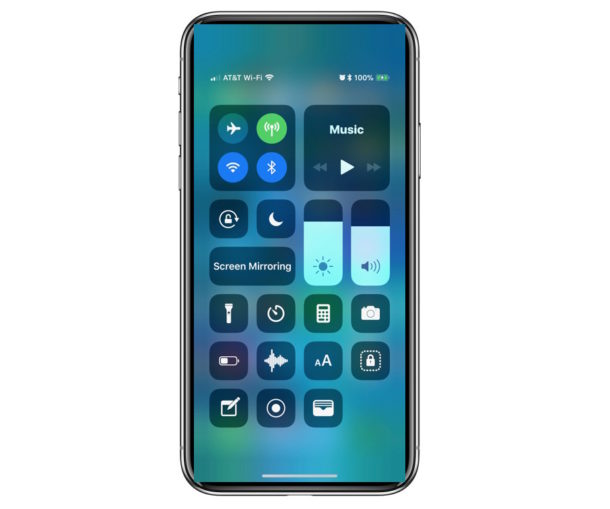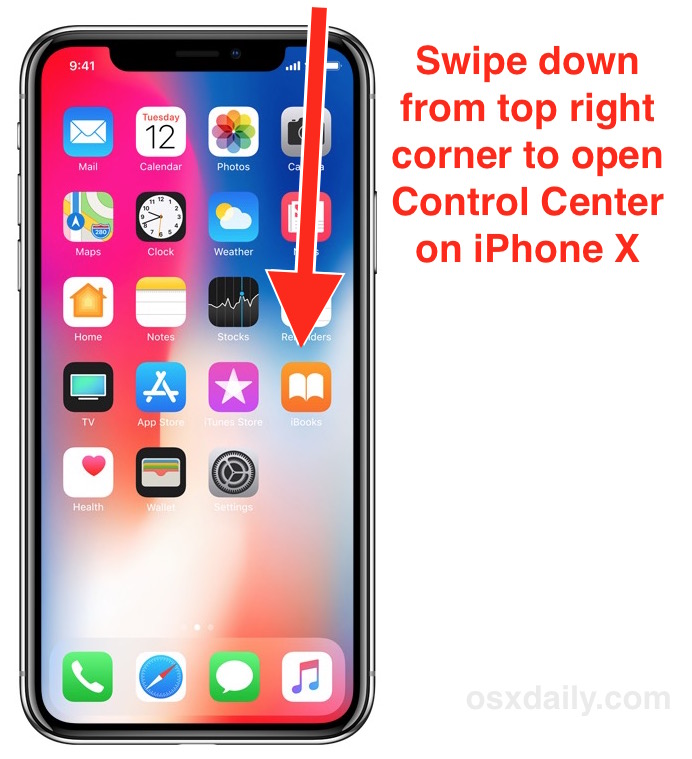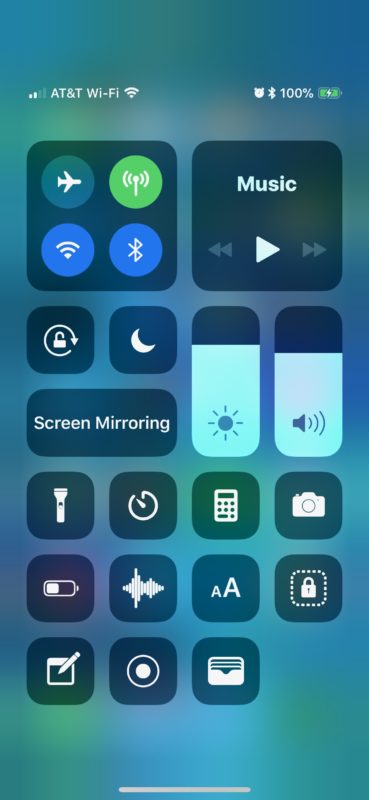How to Access Control Center on iPhone X

As you likely know by now, Control Center is the customizable action screen on iOS that allows you to quickly adjust brightness, volume, wi-fi, bluetooth, music, AirDrop, access a flash light, Do Not Disturb mode, and much more. But if you have an iPhone X, than accessing Control Center will be different than what gesture you have long become accustomed to with other iPhone and iPads.
With iPhone X, accessing and opening Control Center is accomplished by swiping down from the top-right of the display, just to the right of the black notch that cuts down into the top of the screen.
This is different from accessing Control Center on every other iPhone or iPad ever made, which is accomplished by swiping up from the bottom of the screen. On iPhone X, if you swipe up from the bottom of the screen you get to the Home screen instead. The inconsistency between devices can make it a little confusing when getting to Control Center on iPhone X and the same feature on another iPad or iPhone, but it’s possible that how users access Control Center will change again with a future iOS software release, or another new device release.
How to Open and Access Control Center on iPhone X
Grab your iPhone X to test this out yourself and familiarize yourself with the process.
- From any screen on iPhone X, place your finger at the very top right corner of the iPhone X display to the right of the notch, then pull down to open Control Center

To dismiss Control Center on iPhone X, just swipe back up to push it off screen.

You must swipe down from the top-right corner of the iPhone X display to open Control Center. If you just swipe down from the top of the screen, you’ll end up at the screen lock and notifications panel instead. Go to the right of the screen notch where the front-facing camera is, and pull down from there instead.
Remember, you can now customize Control Center and its features, options, and toggles to better suit your individual needs.
You can use a pull down gesture or a swipe down gesture from the very top right portion of iPhone X display, both will activate the Control Center the same. Just be sure you start from the top right of the screen.
If you’re not sure where to start or where to swipe down from, look for the black notch at the top of the screen and then to the right of that for where the battery indicator, wi-fi, and cellular signal indicator is on iPhone X and you’ll see a little line underneath it. That little line indicates that’s where you can swipe or pull down, in this case to access Control Center. A similar gesture line exists on the bottom of iPhone X screens where you swipe up to access Home Screen or mimic the Home Button, or to quit apps and access the multitasking screen of iPhone X.
Even if you don’t use any of the widgets and quick access features available in Control Center, you’ll still probably want to know how to access it so that you can see the battery percentage indicator on the iPhone X, as there is no other way to see the percent remaining in current iOS versions for this particular device.


Many of us can’t swipe. There is a way to access the control center by doing something in settings. When done you get a small button on the screen that when touched brings up the control center,. I’ve done this and it works fine for me. I don’t remember how I did it. If you can find the method you should publish it Many need it and it takes many googles and reading dead ends to find it.
Thanks so much. Frustration – now gone👏
Thank you!
” . . . there is no other way to see the percent remaining in current iOS versions for this particular device. ”
Yes there is. Swipe to the right from the home screen. And just below the “SIRI APP SUGGESTIONS” is a section called Batteries which shows the Percent remaining.
The ‘Battery Widget’ only shows up if you have another apple device connected to your phone (Apple Watch, airpods, pencil, battery case)
If you have a compatible bluetooth device connected, that is. In addition to apple accessories, many 3rd party bluetooth devices also have support for the battery widget.
And on some iOS devices it may show up even when you have no bluetooth accessories connected, as is the case for the 10.5” ipad pro where I am currently typing this comment.